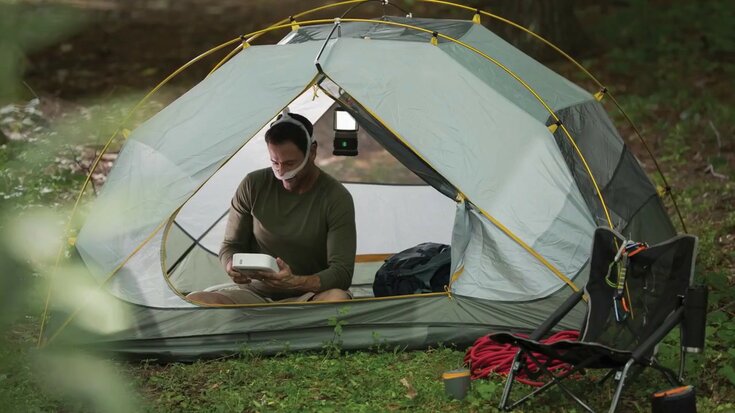Traveling with CPAP
Staying on therapy is essential even when you're away from home. Whether you are flying to a tropical destination, traveling for business, or heading out on a camping trip, you will need to pack your CPAP machine and associated accessories to ensure your continued therapy success.
Flying With CPAP
When traveling by air, rest assured that your CPAP machine will safely pass through the security check. All CPAP machines are labeled by the manufacturers as medical devices. For most machines, you can find this printed on the bottom of the machine. Make sure you label or tag your CPAP with your name and contact information.
If you want to use your CPAP device during your flight, you should call the airline in advance to confirm their in-flight CPAP use policy. You will also need access to an electrical outlet at your seat or bring a CPAP battery.
CPAP Travel Tips
- Make sure your CPAP equipment is dry - Before packing your CPAP, remove the humidifier chamber and empty the water to prevent water from getting inside the machine and to reduce mold and mildew.
- Use bottled water - When you can’t access distilled water upon arrival, have bottle watered available as an alternative.
- Pack some extras - Bring an extension cord in case your accommodation does not have a power outlet close to the bed.
- Check for the correct power supply - Most modern CPAP machines will automatically correct for the difference in voltage (110v in America vs 220v in most of Europe), but you’ll likely need an adapter to fit the outlet.
- Have a backup Battery Pack - Travel can be unpredictable and you never know what might happen along the way. No matter what the situation, having a battery backup can ensure the continuity of your treatment.
- Invest in a DC Converter - A DC converter is an inexpensive way to ensure power supply options. DC adaptors allow you to power your CPAP (or charge your battery) from solar panels, USB ports, cigarette lighter-style outlets, and even car batteries.
- DON’T:
- Check your CPAP and risk it being lost.
- Do:
- Bring an extension cord in case your accommodation does not have a power outlet close to the bed.
- Pack backup CPAP supplies.
- Have a copy of your prescription.
- Adjust your watch to the new time zone as soon as the plane lands.
- Adapt to the time of your destination by eating at local times.
- Try to keep yourself exposed to light and go to bed after the sun goes down.
Camping with CPAP
Camping with CPAP therapy is possible and it's easy too! Depending on where and how you plan to camp you can either continue to use your PAP equipment with a portable power source or power converter.
Travel CPAP machines
For short trips or if you travel frequently, you can purchase a travel CPAP machine (portable CPAP) which is smaller, runs on a battery, and is designed for travel convenience.


